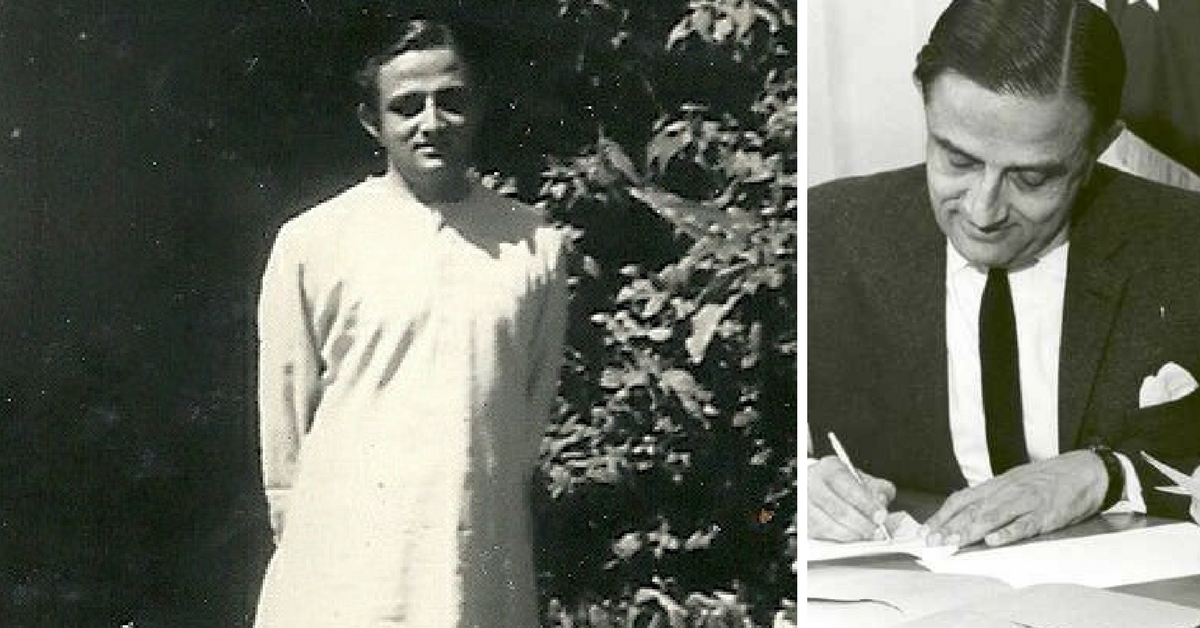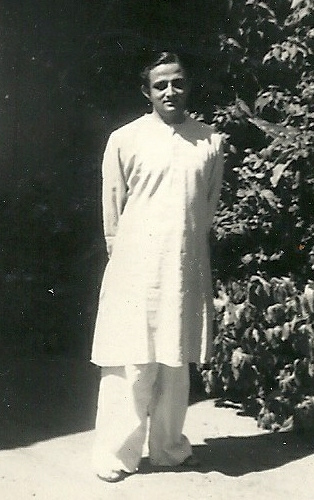10 Incredible Facts About Dr Vikram Sarabhai, the Father of the Indian Space Programme
Fondly referred to as the father of the Indian space programme, his legacy lives on.

On April 19, 1975, India made history when Aryabhata, India’s first-ever satellite, launched into space successfully. An incredible feat by the scientists at the Indian Space Research Organization (ISRO), it went on to conduct valuable research in space with regard to solar physics, aeronomics and X-ray astronomy.
Today, of course, exactly 42 years later, ISRO has exponentially grown from strength to strength going so far as to successfully launch 104 satellites in one day!
One of the main driving forces that laid the foundation to the set-up of ISRO and other scientific organisations in India, was a scientist called Dr Vikram Ambalal Sarabhai. Tireless in his efforts, today he is rightly considered the father of the Indian space programme. Due to his life’s work, India went from a nation struggling to finding its place post-independence to a formidable scientific force in astronomy.
From being the man who fostered talents like Dr APJ Abdul Kalam to founding one of the biggest educational institutes in the country, here are some incredible facts about Dr Sarabhai.

Photo source: Flickr
He was born to a family of freedom fighters
Born in 1919, Dr Sarabhai was one of eight children of Sheth Ambalal Sarabhai, a prominent industrialist part of the textile industry, who was also an ardent Gandhian. Ambalal was so committed to the cause spearheaded by Mahatma Gandhi, that he personally donated a substantial amount to the famous Sabarmati Ashram when it was faced with financial woes. Additionally, one of Dr Sarabhai’s sisters, Mridula Sarabhai, would go on to play a key role in India’s freedom struggle.
His doctoral advisor was Dr CV Raman
As an exceptionally bright young man, Dr Sarabhai studied at the Gujarat College and later went to the University of Cambridge to pursue higher studies. However, he had to return home when World War II broke out. And who served as his advisor for his doctorate? That would be Nobel Prize winner and one of the most celebrated scientists of all time, Dr CV Raman. By 1947, he had completed his PhD. His doctoral thesis was on Cosmic ray investigations in tropical latitudes.
His home in Amdavad was where the Indian space programme began
In a quaint little outhouse of the Retreat Bungalow in Shahibaug Amdavad, a room was converted into an office space. That office space was where a young and brilliant Sarabhai conceived and started work on the Physical Research Laboratory (PRL).
He set up PRL in 1947
As India achieved independence, Dr Sarabhai, worked tirelessly to set up the Physical Research Laboratory. To this day, it is considered as one of the foremost institutes working in the field of space and allied science.
In 1952, his mentor Dr C V Raman would be the one who laid the foundation of new PRL campus.

Photo source: Flickr
He was 28 when he convinced the Indian government to set up the Indian Space Research Organisation
While most of us still struggle to find our purpose in our 20s, by 28, Dr Sarabhai passionately advocated for the setting up of a space agency in India. Once Russia launched the SPUTNIK, he got convinced the government that even a developing nation like India could go to the Moon. Thus, ISRO was set up.
At one instance he said, “There are some who question the relevance of space activities in a developing nation. To us, there is no ambiguity of purpose. We do not have the fantasy of competing with the economically advanced nations in the exploration of the moon or the planets or manned space-flight. But we are convinced that if we are to play a meaningful role nationally, and in the community of nations, we must be second to none in the application of advanced technologies to the real problems of man and society.”
He orchestrated India’s first successful rocket launch from a refurbished church
Dr Sarabhai was one of the most resourceful scientists India has ever seen. On November 21, 1963, he along with a dedicated group of scientists launched a small rocket into space. They were able to do so by heading to a tiny village called Thumba in Thiruvananthapuram and convinced the then-bishop of Trivandrum to let them acquire the church. They would then go on to step up the Thumba Equatorial Rocket Launch (now called as the Vikram Sarabhai Space Centre). Upon the successful launch, Dr Sarabhai is reported to have sent a simple telegram back home.
It read – Gee whiz wonderful rocket show.

Photo source: Wikimedia
You may also like: ISRO Set for yet Another Milestone – a South Asia Satellite for Communication and Disaster Support
He hired Dr APJ Abdul Kalam
Not only did he interview Dr Abdul Kalam but he would later go on to play a key role in mentoring Dr Kalam through the initial stages of his career. By his own account, Dr Kalam has noted that he was just a newcomer to the field but Dr Sarabhai took special interest in him and ensured his own success. He once noted, “I was spotted by Prof. Vikram Sarabhai because I was not highly qualified, but I was working hard, I had acquired the knowledge at the time, when he spotted me as a young scientist. Then he gave me full responsibility to grow, not only he selected me when I was in the lower bottom, but he gave me responsibility to grow and ensured that I succeed and if I failed, he was by my side.”
He played a key role in launching India’s first satellite, Aryabhata
While he himself tragically passed away in 1971 at the age of 52, he had already started the machinations towards building India’s first satellite. His work in cosmic rays and properties of upper atmosphere continues to be an important landmark in science.
He brought cable TV to India
If you are watching cable television right now, then you partly have Dr Vikram Sarabhai to thank for it. Due to the channels of communication he had opened with NASA led to the setting up of the Satellite Instructional Television Experiment (SITE) in 1975. It ushered the advent of cable TV in India.
You may also like: ISRO Could Soon Predict Nearly Every Natural Calamity to Hit India, Saving Millions of Lives
He helped set up IIM Ahmedabad
In addition to having set up some of the biggest scientific organisations in the country (among them being Ahmedabad Textile Industry’s Research Association and the Center for Environmental Planning and Technology), he was also one of the founding members of the Indian Institute of Management, Ahmedabad. Today it continues to be a beacon for innovation and entrepreneurship.
Like this story? Or have something to share? Write to us: [email protected], or connect with us on Facebook and Twitter.
NEW: Click here to get positive news on WhatsApp!
This story made me
- 97
- 121
- 89
- 167
Tell Us More
We bring stories straight from the heart of India, to inspire millions and create a wave of impact. Our positive movement is growing bigger everyday, and we would love for you to join it.
Please contribute whatever you can, every little penny helps our team in bringing you more stories that support dreams and spread hope.



















